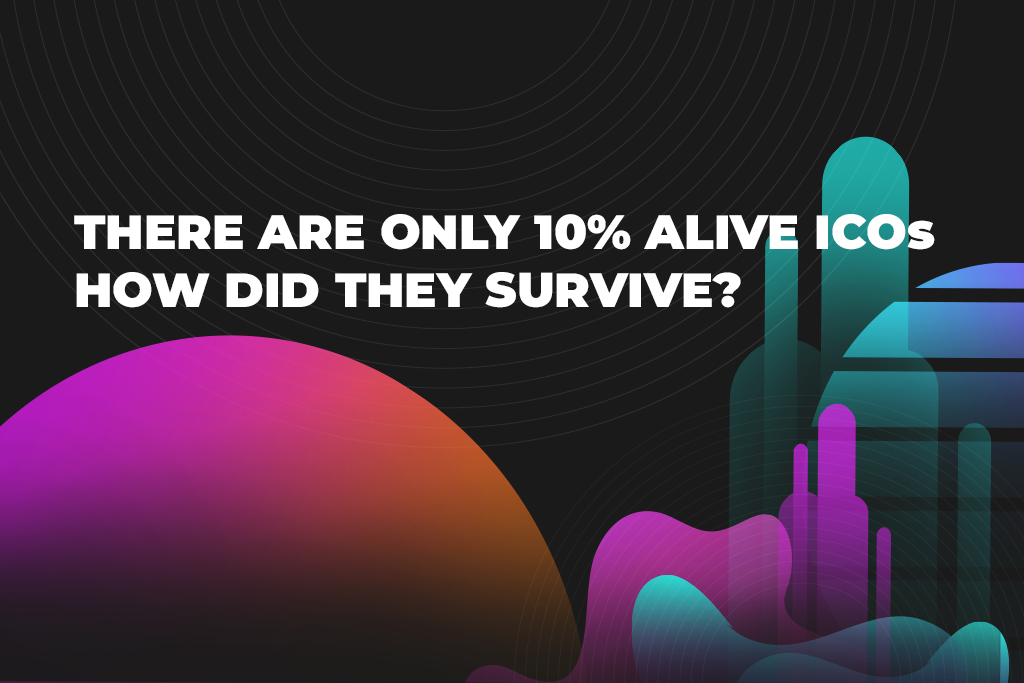
Out of the multitude of ICO projects, raising money, only a small part actually delivered something that could be called a product. Almost 90% of all ICOs failed. There’s a term in venture capital, “a death valley”, meaning the period from the receiving initial investments to the moment of becoming profitable.
Usually, a very small percentage of projects manage to cross the death valley, because every unexpected obstacle can ruin their plans. It happens due to a lack of experience, bad management, market situation, or even luck, as any amount of money can be burnt pretty fast.
That’s true not only for crypto projects but for any startups – any idea can become successful or fail tremendously as an outcome of good or bad management, market situation, and luck. But what defines a successful project, why some startups manage to survive and deliver, and some projects die at early and mature stages?
BOLT: Bringing Television to Poor Countries
BOLT is an ecosystem providing access to entertainment to those users who were unable to get it before. Watching live TV and streaming usually requires a good bandwidth, so the users from developing countries are cut out from entertainment. BOLT solves this problem, allowing its users to access various categories of video content through web-browser based streaming.
How did it survive the initial stage of development? It became a well-established project thanks to its partnerships. BOLT conducted its ICO in 2018. Since then, it has developed its own mobile application and partnered with many channels such as Discovery Channel, or Citizen TV.
All of them available by paying a few BOLT tokens. In addition, BOLT is an official media partner of the 2019 Rugby World Cup. It has a lot of telco partners, such as Maxis and Digi in Malaysia, and Safaricom in Kenya, with 60+ million subscribers, combined. BOLT has a large user base, for many people, using it, it’s the only way to watch videos and broadcasts, that’s why it continues to develop and win new markets.
NOAH: A New Generation of Smart Contracts Platforms
NOAH is another ecosystem, but with a wider range of utility. After conducting an ICO, they released a mainnet and went silent for two years. How did they survive then? The community started to consider the project dead, but suddenly, they hired a new development team, Platinum Q DAO Engineering, and began to develop a new version of the Noah blockchain. Right now, it can handle thousands of transactions per second and can be used as a platform for building any kind of decentralized applications.
The architecture of the Noah ecosystem is built on the dPoS consensus model, with delegates, which ensure the security of the network. With the involvement of the new team, they made an active community and partnered with many projects, such as BTCNEXT, a popular Japanese and Korean crypto exchange, and Q DAO, a decentralized stablecoin ecosystem.
Now it can be clearly seen that the development continues and the ecosystem grows – thanks to a new blockchain, the Noah Project is more alive than ever. The old NOAH tokens can be swapped to new NOAH.Platinum tokens on BTCNEXT exchange.
Overall, the new partnership with Platinum Fund allowed NOAH Foundation to improve its community management, providing 24/7 support, organizing new activities, such as blockchain education and quizzes, and conducting bounty campaigns. Indeed, as a result, it attracted many new users to the NOAH ecosystem and community. In the future, it could translate to the increased number of developers, making decentralized apps for the NOAH blockchain.
Platio: More Than Just a Crypto Wallet and An Exchange
Our third ICO reviewed here is Platio. It’s a crypto bank, registered in Estonia. It organized the ICO campaign in 2018, promising to build a platform for storing and exchanging all kinds of assets, including fiat currencies and cryptocurrencies, and making deals with the use of Smart Escrow, based on EOS-powered smart contracts. One year later they still operate, and their crypto bank is almost ready to launch – anyone can sign up for beta testing.
How did they survive? One of the most important qualities of the project is that it has the FCA license right from the beginning, allowing it to operate as the regulatory-compliant bank. So, they didn’t have any problems with growing a user base and staying profitable.
Soon they plan to issue their own debit cards, supporting both crypto and fiat payments, which will be useful for many people. For sure, being a licensed company, this project has many advantages over its competitors, and maybe in the future, it will be able to get a large user base.
Conclusion
So, what is the secret for success? We have reviewed some projects, all of them use different technologies and have different goals. The main factors of their success are also different – BOLT has succeeded thanks to its partnerships, NOAH created a new blockchain, and Platio has a legal approach that allows it to grow a user base. But the one thing that they have in common, and maybe the most important for any project is dedication. When you work hard, and you have a clear image of what you’re trying to achieve, your chances for success increase many times – with a bit of financing.






